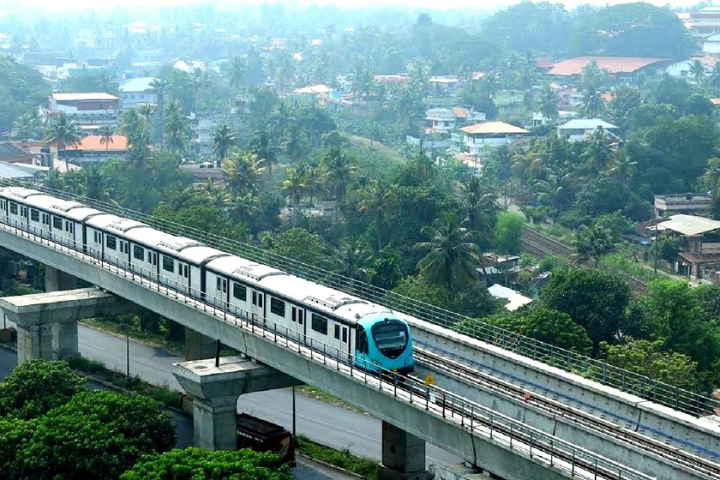Contents
Introduction: Kochi Metro and the Need for Corrosion Protection
The Kochi Metro is a rapid transit system that operates in Kochi and the broader Kochi Metropolitan Region in Kerala, India.
The Kochi Metro, a symbol of Kerala’s pride in India, is a testament to contemporary infrastructure and enhanced connectivity.
Remarkably, just four years after commencing construction, authorities made it accessible to the public, marking it as one of India’s quickest metro projects.
Notably, the Kerala’s metro project is the country’s inaugural metro system to interlink rail, road, and water transport infrastructure.
Additionally, it is India’s pioneer metro rail system to utilize the Communication-Based Train Control (CBTC) signalling system, which is designed to minimize human intervention.
This innovative integration extends further with the Kochi Water Metro, serving as a feeder service to suburban areas along rivers where conventional transport options are limited.
Rapid transit systems like the Kochi Metro are crucial in easing urban congestion and enhancing mobility.
However, the marine environment and other corrosive factors pose significant challenges to the longevity of such structures.
Thus, the project authorities recognized the importance of employing advanced corrosion prevention measures to ensure the durability and safety of the Metro.

Sunanda Global’s Role in Corrosion Prevention For the Kochi Metro Project:
The project team chose Sunanda Global, a prominent provider of innovative solutions for infrastructure protection.
Sunanda Global, acknowledging the crucial necessity for corrosion inhibition in the Metro project, provided its innovative corrosion inhibiting admixture.
Sunanda’s specially formulated admixture emerged as the cornerstone for corrosion prevention in the Metro project, protecting reinforced concrete structures.
Challenges Faced and Solutions Implemented:
The corrosive effects of marine environments and other factors necessitated a comprehensive approach to corrosion prevention.
Sunanda Global’s concrete penetrating corrosion inhibiting admixture offered a multifaceted solution.
It effectively inhibited corrosion induced by chloride ions and carbonation of concrete by forming a protective layer on the steel surface.
This admixture thoroughly penetrated the concrete, ensuring total rebar protection against corrosion, even amid high chloride levels.
Application of Sunanda Global’s Admixture:
The application of Sunanda Global’s admixture involved meticulous steps to ensure optimal protection.
During the concrete mixing process, the contractors integrated Sunanda’s admixture into the batch water, guaranteeing uniform distribution throughout the structure.
Sunanda Global’s commitment to eco-friendliness strengthened the proactive corrosion approach with its nitrite and chromate-free admixture.
Advantages and Benefits For Kochi Metro Project:
The utilization of Sunanda Global’s corrosion inhibiting admixture conferred numerous advantages to the Metro project.
Its simultaneous cathodic and anodic protection of steel ensured robust defense against corrosion.
Moreover, its high penetrating power and compatibility with other construction materials made it an ideal choice for the demanding conditions of marine infrastructure projects like Kochi Metro.
Seamless Integration with Kochi Metro’s Vision:
The implementation of Sunanda Global’s admixture seamlessly aligned with the vision of Kochi Metro.
The project met immediate transportation needs while also establishing long-term resilience against environmental challenges, prioritizing durability and sustainability.
Furthermore, Kochi Metro’s adoption of advanced corrosion prevention demonstrates its dedication to excellence and innovation in urban transit.
Conclusion:
The effective integration of Sunanda Global’s anti-corrosion admixture is evidence of the Kochi Metro project’s proactive stance.
The project prioritized corrosion prevention, ensuring the longevity, safety, and reliability of Kochi Metro for generations to come.
Sunanda’s innovative solution addresses current challenges while paving the path for sustainable infrastructure amidst changing environmental factors.

